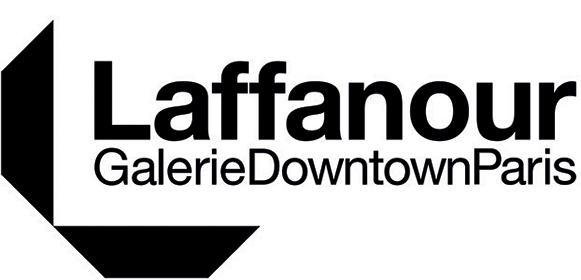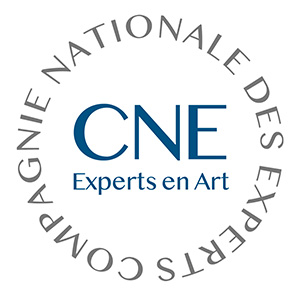
What a pleasure to sit at the table with family, with friends, with the person you love; to start long discussions, to laugh or even end up kissing! But what table to choose for the house?
An oriental proverb says: ‘The number of guests at the table is the blessing of the house.’

The table – simple piece of furniture, object of Design, place of conviviality – always remains, by its shape, a piece of furniture made up of a simple tray resting on one or more legs.

But as there are high tables, there are also coffee tables: visible or invisible, or like game tables, colorful!

As recalled in the definition chosen by Joseph Kosuth in his conceptual work One and three table (1965): “A smooth board usually supported on legs! “ The table is therefore also an object which becomes a subject for contemporary artists.
1. La table a une longue histoire !

In Prehistory, it does not really exist yet. It’s not the first thing men are looking for, at least not immediately! Eating, cooking, heating, hunting, defending and cultivating the earth are essential.

Under Greek and Roman Antiquity, meals around the Emperor and the Senator became veritable banquets. It’s a time of sharing ideas, but also of conspiracy. Surprisingly, it’s almost a lying down position at a table, whereas for a long time we have been eating seated.

At the time of the Gauls, Asterix and his colleagues made large feasts on a circular table, around the fire. But the whole village is not there, the women are missing at the banquet!


In the Middle Ages, the prince, the Lord and the King gathered around them the Court which represented trusted men. To be at the table, to sit at the table means to share a feast in the presence of musicians, troubadours, storytellers on a long rectangular wooden table. In order to receive all of the guests, the tables are generally long, rectangular and often in carved wood, depending on the region.


The tradition of the monastic meal seated around large tables has existed since Christ dined with his apostles, one last time before the Passion…
It’s a time to share in community, to listen to readings of holy texts, so tables were conceived large from the start. The idea of these long tables will be partly taken up by the Shakers.


Under the Ancien Régime, the tables – large in size and often covered with sumptuous tablecloths – were used as much for the Council of Ministers, surrounding the King, as for big course dinners – diplomatic – in order to bring the Empires together. The tables, mostly rectangular, are set in a unique, majestic decorum.


At the beginning of the 19th century, several emigrants from Europe settled on the East Coast of the United States to develop a primarily religious community: The Shakers. Above all, developing autonomy and life in autarky, they also create very minimal furniture, without ornamentation, including large tables, made so that separated meals, between men or women, become above all a moment of spirituality. The wooden tables are very long, and their minimalism already introduces the elements of twentieth century design.


At the turn of the century, around 1900, Art Nouveau architecture (alongside the Jugendstill, Liberty, Wiener Werkstâtte movements, etc.) influenced furniture in various forms.
Whether by forms close to the natural environment – for Art Nouveau – or even simplified, very minimal forms – for the Jugendstill as well as the Wiener Werkstätte – the change in tone shows a change in societies on the move. This new style, among others that developed by Hector Guimard in France, already marks the avant-garde of the 20th century!

Still at the beginning of the XXth century and in popular circles – here among our fellow Britons – long tables are set up at weddings: families are large at the time and these huge tables bring fellow citizens together!

In the art world, the table has always been used by artists, in specific settings, in connection with the ideas of the time. In this self-portrait of the 1920s by Florence Henri, the table is used to deconstruct the the traditional image plan to go towards this ‘New Objectivity’ of the Avant-Gardes! The table therefore hardly appears, and the table loses its original sense of everyday furniture since it creates a new line of vision!

In the 1920s, great French decorators such as Süe & Mare, Armand Albert Rateau, Jacques-Émile Ruhlmann or even Pierre Legrain… created oversized tables, in very beautiful exotic woods, with shapes specific to each of the creators, which will make part of the Society of Decorative Artists.
This exceptional marble table made around 1929 by the architect Michel Roux-Spitz, for a Parisian interior, shows the content of the collection and the importance that its owner wanted to give it!

At the same time, another modern movement was created in France, more geared towards the European avant-garde: The Union of Modern Artists (UAM). Architects and designers like Le Corbusier, Pierre Jeanneret and Charlotte Perriand designed a rectangular table, with a glass top, mounted on a structure with four metal legs. Creation which is quite the opposite of what SAD creates! Nevertheless, this table fits perfectly in the apartment spaces or houses with perfect geometry and right angles that Le Corbusier created at that time. A new material, the glass top, shows Le Corbusier’s innovative ideas but also those of the very modern UAM.


In the 1930s, the Mexican painter Diego Rivera represented the meal at the table as a scene of sharing, of communion of ideas, of reunion of the different poor classes of Mexican society. This meeting therefore has a whole different meaning than a simple family meal! This family table takes up the very minimal design imagined at the time by the architect Luis Barragan, which has a very simple form and concept, without decoration, also reflecting its architecture.


… Then comes the War. Other tables appear but the search for aesthetics is no longer on the agenda. Pierre Jeanneret designed in 1943 for Jean Prouvé and his family (7 people), a long fir table with straight sides and curves: this is the era of so-called « free-shaped » tables! This exceptional table, but also very unusual for the time, illustrates a new desire for innovation that will develop mainly after the war!

Then comes the 1950-1960s, this famous post-war period will have a lot to say and to discover!

Firstly, Jean Royère, and his « Eiffel Tower » coffee table with a metal base is inspired by the architectural and metallic grid of the eponymous Tower! This pattern will be produced and then adapted in different forms!

In the 1950s, tables appeared in different forms, and in different materials…
Ceramics will prevail at this time and will, among other things, be used for furniture. Georges Jouve created a large dining table in 1946, in collaboration with another great ceramist: Pol Chambost for his apartment in Paris …
The table is no longer just made of wood or metal!


For his part, Jean Prouvé designed a minimal table whose legs, in bent sheet steel, had a trapezoidal shape and supported an ash or wooden top covered with black formica. Designed for offices, a library room or the canteen of the University of Antony, this table will have little effect in the 50s but will revolutionize the interior space from the 80s, becoming an iconic piece of the post-war years for a contemporary space! Like what, taste catches up with history … !



Returning from Japan in 1946, Charlotte Perriand was strongly influenced by the new forms that she discovered in Japanese culture. She therefore creates pieces of furniture with new shapes, including her famous “free form” table – the name says it all – which partly revolutionized the interior space of the time … In light or black-stained wood, its majestic shape already brings a revolution in the Household Art of the time! She hasn’t aged since 65 years!

Brazilian Design is also developing during the same time, with the use of sumptuous local woods, such as Jacaranda.
With creators like Jose Zanine Caldas, who develop a certain style linked to a specific thought on what nature can bring to men, new forms appear … They will develop even in architecture.

Rounder, softer shapes appeared in the 1960s …
The Saarinen table edited by Knoll International will become representative of this time, in high table and coffee table.

Ettore Sottsass created in 1963 with his editor Poltronova a round marble table: « Loto » to which he gives a simple form but in a noble and ancestral material. This minimalism itroduces radical design to Italy at that time.

The 1970s were marked by the change that began in the late 1960s, in a surge of protest: everything is transformed, everything changes!
In the midst of a social, intellectual, sexual and artistic revolution, designers like Gaetano Pesce draw huge unusual tables that revisit history, like this deconstructed Ancient Italy table!



The Italian Group Archizoom Associati creates a line of everyday furniture with geometry, the perfect table. This geometry, which goes for furniture, also goes for architecture and is therefore borrowed to redraw the world … In this atmosphere of questioning, the table loses all decor, while using a new one!

This beautiful marble table designed in 1975 for a house on the French Riviera, by the Brazilian architect Oscar Niemeyer exiled in France, shows us that for architects, furniture has always existed in the continuation of architecture, and rarely the opposite … Indeed, this table has the specific shape of the rounded curves that Oscar Niemeyer uses all his life in his architecture!

In the 1980s, the search for new forms for tables continued with very specific creations such as the table ‘Sansone’ designed in 1980 by Gaetano Pesce. Irregular in shape, it becomes one of the symbols of anti-industrialization that Pesce puts forward in his Design! Opposed to mass production, he designed this avant-garde piece of furniture which is like a manifesto of Radical Design!

The M1 table, designed in the early 80s by Stefan Wewerka, shows the research that this designer is carrying out on other new forms. This creation presents a mix between the principles of functionality of the furniture and the unexpected shapes selected by the designer.

Let’s also talk about Philippe Starck who created in 1982 this dining table ‘Dole Melipone’, which uses a very specific composition of the base.
It’s sort of a real sculpture! This is the New Design from the 80s shown here!

Ron Arad, crucial international designer of the last 40 years, created in 2006 an exceptional event around the table!
For the opening of the first Design Miami/ fair, Ron Arad designs a set of 65 tables in polished steel, all of unique shapes which, exposed from floor to wall, slowly remove the notion of space from the place. The table as an object or furniture takes on a whole new meaning, also becoming a sculpture!


Choi Byung Hoon, leader of contemporary Korean Design for the past 40 years, designs his furniture by adapting ancestral traditions of the use of natural materials (wood and stone) and creating new forms, in particular for coffee or dining tables!

But the table can also become a real work of art.
The « Shark Table« , designed in 2008 by François-Xavier Lalanne, is one of his last creations before his death! Throughout his career, this artist but also designer has always incorporated the animal universe into his creations. For this table, the shark fin surprises us in a context where it is not entirely expected!
Finally,

Whether the table serves as a sharing place with friends…

… whether the table is also a place of the conflict of ideas,

… or if we are alone at the table to meditate,

.. Or with family to relax,

… So, let’s choose the right one and gather together at the table!



